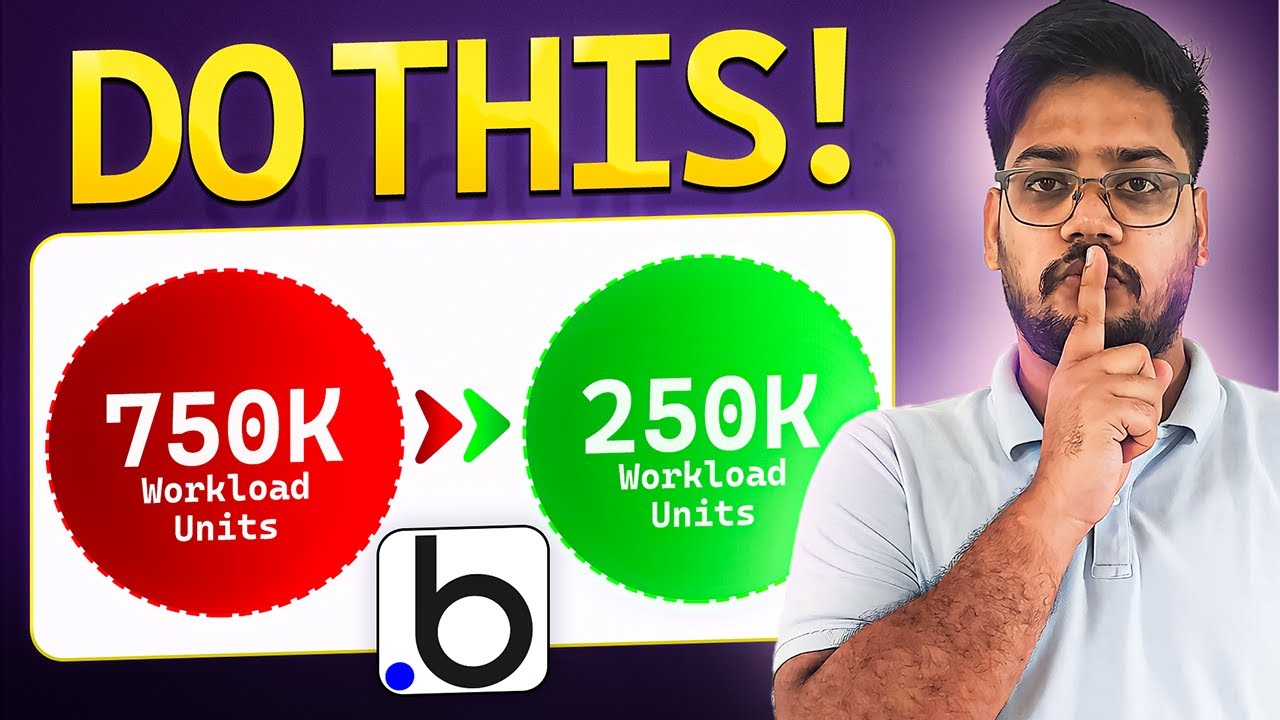Mastering Workload Units in Bubble: Strategies for Efficiency
 Ankur Khandelwal
Ankur Khandelwal
Learn what workload units are in Bubble, how they are calculated, and discover actionable strategies to optimize and reduce your app's workload units for better performance and cost efficiency.
One think before moving forward- If you are reading this post in your email, you must have subscribed to the Bubble Weekly Newsletter. That's why you are receiving this email. If you don't want to continue getting these emails, you can unsubscribe it.
Watch Video if you prefer-
Understanding Workload Units in Bubble
In the world of Bubble.io, a popular no-code platform, understanding and managing workload units is crucial for optimizing app performance and managing costs. Workload units are a measure of the computational resources consumed by your app on Bubble's servers. Just like you measure weight in pounds or kilograms, Bubble measures the computational work in workload units.
The Concept of Workload Units
Think of workload units as a way to gauge the stress your application puts on Bubble's servers. This measurement is directly tied to Bubble's pricing structure, making it essential for developers to monitor and manage their app's workload units efficiently.
Why Workload Units Matter
Every action your app performs, from database modifications to API calls, consumes a certain number of workload units. These units are a reflection of the server resources required to execute these actions. Bubble offers a transparent overview of how much each action consumes, but the calculation is not always straightforward.
How Workload Units Are Calculated
Consider booking a luxury hotel room as an analogy. The advertised cost is not the only expense; there are additional costs like transportation, tips, meals, and more. Similarly, in Bubble, an action like modifying a database doesn't just consume its base workload units. You also need to account for the actions required to locate the data and any subsequent updates or queries, each adding to the total workload units consumed.
Key Factors Influencing Workload Units
Database Searches: The complexity and volume of your database searches significantly impact workload units. Optimizing search constraints can lead to more efficient searches and lower consumption.
Data Transfer: The amount of data sent to the client side, governed by privacy rules, also affects workload units. Less data transfer means fewer units consumed.
Page Loads: The process of loading a page, including fetching JavaScript, data, and executing page load events, consumes workload units. Optimizing what loads on a page can lead to savings.
Actions and Workflows: Server-side actions and workflows consume workload units, while client-side actions do not. Prioritizing optimization for frequently called actions can reduce overall consumption.
Strategies for Reducing Workload Units
Optimize Database Searches: Use precise search constraints to minimize unnecessary data processing.
Manage Data Transfer Efficiently: Implement strict privacy rules to limit the data transferred to the client side.
Optimize Page Loads: Avoid unnecessary loading of elements and data on page load events to reduce workload units.
Focus on Frequent Actions: Identify and optimize the actions and workflows that are called frequently and consume the most workload units.
Use Back-end Workflows Wisely: Choose between parallel and sequential execution based on your needs to avoid excessive workload unit consumption.
Monitor Workload Units: Regularly review your app's workload unit consumption through Bubble's logs and metrics to identify areas for improvement.
Conclusion
Managing workload units in Bubble is about understanding the factors that contribute to their consumption and implementing strategies to optimize and reduce this consumption.
Remember, optimizing workload units should not compromise the functionality or security of your app. It's about finding the right balance between performance and resource consumption.
For more detailed insights into managing workload units in Bubble, watch the full video here.
Follow me on Twitter.
Subscribe to my newsletter
Read articles from Ankur Khandelwal directly inside your inbox. Subscribe to the newsletter, and don't miss out.
Written by
